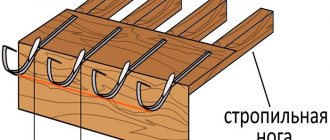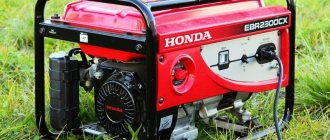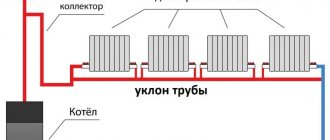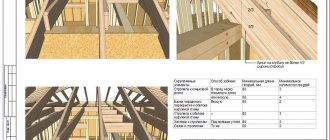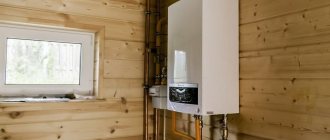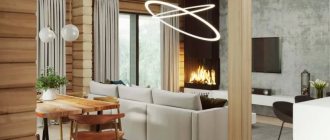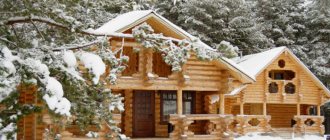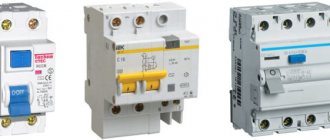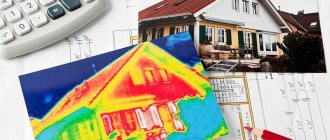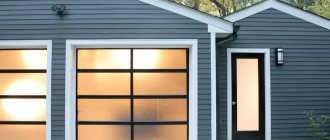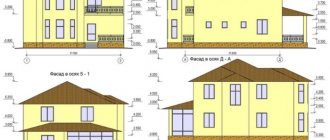To create comfortable living conditions in a private home, it is unlikely to be possible without the use of a modern air conditioning system. The air conditioner performs several important functions at once that are necessary to create an optimal microclimate in the house:
- Humidifies or dehumidifies the air, depending on conditions;
- Purifies the air that enters the home from the street;
- Maintains a user-specified air temperature that is comfortable for living;
- Ensures normal air exchange and air circulation.
Features of air conditioning in a private house
When choosing an air conditioning system for a country house, consider:
- system power. This parameter is selected according to the dimensions of your building. In this case, it is worth taking into account all heat sources, general illumination and the number of permanent residents. Because if the power of the air conditioning systems for the house is excessive, then the electricity will increase. And if, on the contrary, the power is not enough, then the air conditioner will no longer cope with the assigned tasks. That is why specialists calculate power.
- energy efficiency of the system. The higher this parameter, the more expensive the air conditioner will cost you. But at the same time, the higher the energy efficiency of the installation, the lower the energy consumption will be.
- type of compressor. The right solution for a cottage is an inverter compressor. This type economically consumes electricity, is characterized by silent operation and smooth adjustments. If we are talking about small air conditioners for a country house, where you visit only in the summer, give preference to non-inverter units.
- air intake function. The best option, if your house is built in an ecological place, would be to have an air intake function rather than a filtration function.
- exterior and interior. The split system will inevitably affect the exterior and interior of the house. Think in advance where you will install the indoor and outdoor units. Or maybe you install a duct or cassette system, where the blocks are not so noticeable?
Manufacturer's choice
The choice of air conditioner brand is very individual - it depends on your personal preferences. For our part, we would like to recommend you time-tested equipment for air conditioning your cottage:
Elite:
Middle class:
Economy:
We are a professional engineering design and installation company. On our website you can receive a commercial offer and find the necessary information.
EuroHolod provides air conditioning for a cottage or private house at your facility on a turnkey basis. For questions related to air conditioning, please call.
To receive a commercial offer
, write a request to e-mail [email protected] or send a quick request
See below
- Air conditioning systems
- What is your object?
Window monoblock air conditioner
It is a single block that is mounted in a window or doorway. It is used, as a rule, in country houses, since it is not possible to install it in the plastic windows of city apartments.
Pros:
- budget system.
- consumes a minimum of electricity.
- practical.
- easy installation.
- small-sized.
Minuses:
- unattractive appearance.
- There is no way to install it in a plastic window.
- There is no possibility of using blinds; the illumination of the room is also reduced.
- noisy work.
- low power.
- in cold weather, cold air from the street enters the room.
Fan + plastic container. Option 2
- cooler;
- plastic containers (three two-liter and three half-liter);
- foam tape.
Manufacturing:
- For two-liter containers you need to cut off the bottom and drill holes inside. In one case - from below, in the other - from the side.
- Wrap the cooler with foam tape (for fixation and vibration absorption).
- Place the mechanism between the cut parts so that at the bottom there is the bottom of the bottle with side holes.
- Remove the bottom from two container lids.
- Inside two half-liter bottles, make holes on the side with a diameter equal to the neck.
- Insert the neck of a large container inside the side hole of a small one, secure it inside with a cut-off lid (you can use a long knife or other tool).
- Fix the second, small one with the first in a similar way. Now the small bottles can rotate perpendicular to their bases.
- Attach a third half-liter container with ice to the plastic box with the cooler.
- Cover the whole thing with a two-liter bottle with two small ones attached.
Improvised homemade air conditioner made from plastic bottles is ready for use. The air flow is regulated by rotating half-liter containers in two directions. It will be useful for a small room, for individual use.
Floor standing monoblock air conditioner
The system is a single unit with a corrugated hose that is connected to a window or ventilation. Control occurs using a remote control. The model is not as primitive as the previous one. Also well suited for a dacha, where the owners spend time only in the summer.
Pros:
- mobility. It is possible to move the air conditioner to other rooms.
- ease of installation and dismantling.
- special filters included in the system will clean the air of dust and provide it with ions that are beneficial to health.
Minuses:
- low power.
- unattractive appearance.
- the need to frequently empty a special water tank.
Why ventilation and is it necessary?
The main threat to fresh air is carbon dioxide (CO2). With a slight increase in CO2 levels, a person feels stuffy, tired, drowsy, inability to concentrate, loss of attention, irritability, and decreased performance. If the CO2 level rises further, then breathing problems, suffocation, rapid pulse, dizziness, and someone even faints occur.
Co2 concentration in the air and its effect on human well-beingSource 7lestnic.com
The most harmful is long-term stay in rooms with a high CO2 content, which is why it is so important to pay attention to room ventilation. The correct and energy-efficient method of regulating air exchange is regulation using a CO2 sensor. Whether ventilation is needed in a frame house depends primarily on the frame material. Standard frame-type houses are made of non-breathable materials, so the design of the system is drawn up together with the layout of the house
And then, together with the arrangement of the house, it is carried out according to drawings and diagrams specially selected for the type of building
Standard frame-type houses are made of non-breathable materials, so the design of the system is drawn up together with the layout of the house. And then, together with the arrangement of the house, it is carried out according to drawings and diagrams specially selected for the type of building
Whether ventilation is needed in a frame house depends primarily on the frame material. Standard frame-type houses are made of non-breathable materials, so the design of the system is drawn up together with the layout of the house. And then, together with the arrangement of the house, it is carried out according to drawings and diagrams specially selected for the type of building.
A standard frame house has an energy-saving and airtight design, which is complemented by plastic windows and doors. This causes the air to constantly heat up inside the room, since there is no full exchange with the air surrounding the house.
The most demanding areas of a building regarding the need for air exchange are bathrooms, toilets and kitchens. The hood in a frame house is installed in such places.
The exhaust pipe is laid under the ceiling during the construction of the house. Source zen.yandex.ru
For each type of building, according to its use, its own type of air exchange devices is established:
- seasonal accommodation. Usually this is an ordinary dacha. In such cases, the natural system is installed in all necessary rooms;
- year-round country use. In several rooms, including the kitchen, an exhaust duct with forced ventilation, that is, mechanical, is installed;
- permanent residence in the house. The most commonly used type of ventilation is forced. A heat recuperator and gradual air supply are used to minimize temperature fluctuations.
In addition to the presented options, there are also mixed schemes that include the features of each type of ventilation with division into rooms that require increased or decreased air exchange.
Floor standing monoblock air conditioner without duct
It is a single unit, which for full operation you will only need to unpack, place in one of the corners of the room and turn on. Also well suited for a small country house, which is used only in the summer. When the season ends, you can take the air conditioner with you and use it in the city.
Pros:
- ease of use.
- mobility.
- small size.
- lack of installation.
- additional heating and drying functions.
- attractive design.
Minuses:
- low power.
- the need to frequently pour water into a special container, and also to frequently empty a special tank.
- The device is noisy.
- not suitable for rooms without windows and with high humidity levels, such as basements.
- It is impossible to set the exact temperature.
Install the indoor unit
The installation of air conditioning in the house continues. If you used a hidden installation method, the indoor unit must be hung after finishing (hanging wallpaper or painting the walls). This makes it much more convenient to carry out repair work.
To install the indoor unit, it is necessary to fix the so-called on the wall. mounting plate and then hang the unit on it. The block is attached to the plate either with special latches around the perimeter of the case, or with another type of fastener. It is better to do the work with a partner. It can feed tools and parts while you install the air conditioner while standing on a stepladder.
During installation, the route is connected to the block. Copper tubes are connected to the fittings, and electrical wiring is connected to the “brains” of the air conditioner. This stage requires special knowledge and skills from the installer. If you do not have them, it is better to use the help of a more experienced friend or professional specialist.
Wall split system
Split is translated from English as separate, which is why all systems with an indoor and outdoor unit have the prefix - split. The wall-mounted split system is the most common and most suitable for a small country house. For example, if one block is enough for you for a large living room, which is combined with a kitchen. It is best to place the block in the center of the longest wall. If there is a sofa under the unit where family members like to spend time, then it makes sense to install a transparent screen so that the air flow does not interfere with vacationers. When installing the unit in a bedroom or nursery, make sure that the air flow is not directed towards the bed.
Pros:
- simple controls.
- heating in cold weather.
- air filtration if necessary.
- energy savings in some models.
- air ionization in some models.
- attractive design.
Minuses:
- complex installation.
- need for professional service.
Tools and Supplies
When performing installation work, it is important to comply with many requirements, and the main one is complete sealing of connections when the blocks are positioned strictly horizontally. To install the air conditioner yourself, you will need a certain set of tools, as well as consumables.
Tools that may be required during installationSource avatars.mds.yandex.net
Tools
The minimum set of tools is as follows:
- drill;
- calibration device;
- sandpaper;
- files;
- perforator;
- pliers;
- flarer;
- drills of various diameters;
- high precision construction level;
- device for bending the pipeline;
pipe cutting device or hacksaw.
In systems up to 6 meters long, you can get by with the listed tools. For longer lengths, a vacuum pump will be needed. It is recommended to use it on short sections to obtain the best quality installation, but on long sections its use is mandatory.
Materials
To install a split system, you will need to use certain consumables. The list of required components is as follows:
- anchor fasteners;
- bolted connections;
- dowels;
- mounting of the outdoor unit;
- copper pipes used in cooling systems;
- plastic protection for communications;
- power cable;
- drainage tube;
- pipe insulation.
All this is purchased in accordance with the specifications required by the manufacturer for the installation of specific equipment.
ConsumablesSource s-climate-s.com.ua
Cassette split system
Well suited for houses that differ in their dimensions. It will support any interior, since after installation it is a system located at the same level as the ceiling. The size of the cassette air conditioner is 600 by 600 mm, which coincides with the size of the ceiling tiles. This type of home air conditioning is suitable for central placement in the room.
Pros:
- uniform air flow directed to all four sides.
- An ideal system for large rooms.
- silent operation.
- suitable for any interior.
Minuses:
- Suitable only for installation in conjunction with a suspended or suspended ceiling.
Sequence of work
Before you install an air conditioner yourself without involving an experienced technician in your own frame house, you must carefully study the instructions from the manufacturer and the recommendations of specialists. The quality of installation work and the duration of uninterrupted operation of the climate system will depend on this.
Before determining the installation location of the equipment, it is important to study the layout of hidden electrical wiring and heating pipes.
Duct split system
In duct systems, unlike wall and cassette systems, there is the possibility of zoning, that is, it is possible to set the desired temperature in each room separately. It is best to install such an air conditioner in a large building, since the system is not a budget one.
Pros:
- zoning (setting the desired temperature in each zone).
- the system is reliable.
- attractive grille design that can be customized to your liking.
Minuses:
- The system is not a budget one.
- installation is not budget-friendly.
- The system requires professional regular maintenance.
About pipelines
Buying pipes
It is better to buy a copper tube in a whole coil: it is better to spend money on some stock, which will then go somewhere else, than to risk the compressor: sawdust may remain in the tube from which it was cut. Also make sure that the ends of the tube in the bay are rolled at the factory, and that the tube itself does not have dents or cracks. Long pipelines will allow you to lower the outdoor unit lower, so that some overruns when purchasing are then compensated for by a good thermosiphon.
Cutting, scraping and flaring of tubes
Before you begin installation, you need to practice flaring the tubes: for an air conditioner this is a vital issue. Flaring is done with a special tool; how it works, what it looks like, what possible defects are, and what the final result should be can be seen in the figure:
For training, you need to immediately buy some kind of scrap of the same tube along with the coil; We do not touch the bay before installation. At the same time, let's practice cutting and scraping: the tube is cut in a circular motion, and when scraping, the tube must be held with the end down so that the scraped burrs do not fall into its lumen.
Multi-split system
If you decide to focus on wall-mounted or cassette models, but you are confused that external units will spoil the facade of the building, pay attention to the multi-split system. The installation consists of several indoor units and a single external unit.
Pros:
- only one external unit, instead of several.
- Only one external unit produces noise, not several.
- Only one external unit will have to be serviced (cleaning, refilling with refrigerant), and not several.
- You can place both wall-mounted and cassette blocks.
Minuses:
- installation is not budget-friendly.
- zoning does not apply to this system. If you turn on the heating in one room, you won't be able to turn on the cooling in another.
Laying communications
Air conditioning units in frame houses are connected to each other by copper tubes and electrical wires. Additionally, a drainage pipe is led out through the wall.
First, copper pipes are laid. They are pre-cut to the specified dimensions, the cuts are aligned and protected. Next, a thermal insulation tube is put on the finished product and inserted into the hole prepared in the wall.
The ends of the electrical wires are first stripped of insulation, crimped with pliers and special tips are installed on them. The finished cable is connected according to the diagram described in the instructions from the equipment manufacturer.
The drainage pipe is connected to the corresponding outlet equipped on the indoor unit of the air conditioner and is led outside the building through a pre-prepared through hole in the wall.
Can't do without modernization
High-quality thermal insulation of frame-type real estate walls is both an advantage and, in some way, a disadvantage of this type of building. Therefore, the main condition for comfortable living in them is to ensure a sufficient degree of ventilation of the premises.
Thanks to the design features, ventilation in a frame house can be created or modernized by the owner himself - to do this, just watch a video or even read material on this topic. This need is indicated by:
- Feeling of stale air in the rooms, constant desire to ventilate them.
- Formation of fungus and damp spots in corners. Particularly “vulnerable” areas are the bathroom and kitchen.
- Formation of condensation on windows.
Multiple signals can directly indicate that the natural air flow is not enough to normalize the microclimate and humidity level in the room. Often, home owners have to think about upgrading the current model of the ventilation network.
Advanced Features
What are the advanced features? First, additional filters. Remember that the main task of the filter in an air conditioner is to protect the fan and heat exchanger from dirt and dust.
If the heat exchanger becomes clogged, heat removal will deteriorate and the compressor will burn out. All other advantages are naked advertising. Therefore, do not be fooled by all sorts of catechin, apple and vitamin C filters.
The same applies to the ionization function. Their ionization unit is so large that you will never feel the real effect from it. Unless you convince yourself otherwise.
All these additional functions are an elementary marketing ploy in order to sell the air conditioner at a higher price and stand out from the competition.
Well, in the end, we will give a rating of the most popular models of split systems according to the website expertcen.ru, indicating their characteristics, main advantages and disadvantages. To view the information, click on the tab with the name.
The best inexpensive air conditioners
The best universal split systems
The best air conditioners for the bedroom
Common mistakes when building frame houses with your own hands
When erecting frame buildings, the following mistakes are most often made:
Common mistakes related to the choice of materials
It is important to select the correct cross-section of all wooden elements and take into account the moisture content of the wood. Only well-dried boards and bars are suitable. Sometimes the lower and upper frames are not secured with bevels, as a result of which the house does not withstand wind loads well
For the same reason, it is better to use sheet wood materials rather than boards for cladding the frame. Using budget insulation is also a mistake. It is best to purchase mineral or basalt wool rather than use cheap polystyrene foam. To fasten posts and beams, perforated corners or black self-tapping screws are sometimes used. You shouldn't do this. It's better to use regular nails. You must not make mistakes when choosing vapor and waterproofing, because in the future moisture will accumulate in the wall structure, which will lead to deterioration of thermal insulation, the appearance of mold and rot.
To build a high-quality frame house, it is not enough to strictly follow the construction technology. First of all, you need to make or buy a good project with calculation of material consumption and development of all components
It is equally important to choose high-quality building materials and carry out installation in compliance with all nuances and requirements
Why is it necessary to design an air conditioning system before starting renovation work?
At first it may seem that design is a step that can be skipped and thereby save money. But we are sure that this opinion is wrong and here are the reasons why the design of the engineering system should be carried out before the start of repair work:
- Only under such conditions can engineering communications be integrated into the interior design.
- Budgeting. Design will allow you to see the exact estimate of the project before installation work begins. This way, you can choose a system within the strict limits of your allocated budget.
- Possibility of integration with other engineering systems (ventilation, steam humidification).
- Accurate coordination of all work with “allied workers” (builders, designers, installers, etc.).
- High quality result. Design will allow you to create an effective air conditioning system that best suits all the parameters and features of the room.
As a result, you get a system according to your budget that works efficiently, is well placed and works in conjunction with other engineering systems.
Technical characteristics overview
If you already know which type of air conditioner is best suited for your home and have decided on your budget, it would be a good idea to look at the product data sheet to learn more about the technical characteristics. They are no less important than the number of modes or type of compressor.
Let's consider the parameters on which the energy consumption and ease of use of the device depend: power, noise, energy efficiency, control method.
Parameter No. 1 – power and working area
The choice of power is directly affected by the area of the room. It is customary to calculate based on the ratio: to cool 1 m² of area, 100 W are required.
Therefore, for a 20-meter living room you need to buy a unit with a power of 2-2.2 kW. But do not forget that powerful devices produce louder noise.
When choosing, do not focus on the exact dimensions of the room’s area; it is better to add another 15-20% to the actual data. This way the device will not experience overload and it will be easier to cope with its task.
For larger rooms, a more detailed calculation is required.
There are calculators that take into account such accompanying factors as:
- presence of windows and glazing area;
- number of floors, location of the apartment (corner, sunny side), ceiling height;
- average number of permanent residents;
- the presence of electric lights and heaters - radiators, stoves, etc.
But for a standard room of 15-20 m², careful calculations are not required; average values are usually sufficient. Some manufacturers, in addition to power, also indicate the recommended maximum room area.
Parameter No. 2 – noise level of the indoor unit
There are always household appliances in the house that produce various noises. For example, a refrigerator that periodically turns on and sometimes hums quite loudly. It is clear that an additional “loud” device is undesirable, so noise level is one of the important parameters.
For inverter models it is usually less. Some devices in cooling mode produce a quiet and monotonous noise not exceeding 20 dB. This is an excellent indicator, suitable for bedrooms and children's rooms.
Linear models “sound” much louder - their noise level reaches 35-45 dB. This is normal for a living room where residents are present during the day, but for a bedroom it is uncomfortable
Unfortunately, manufacturers do not always provide reliable information. Sometimes in the technical data sheet you can only find the level characteristic of the device operating in “night” mode. We advise you to look for reviews from real users before purchasing.
Parameter No. 3 – energy consumption class
By ignoring the energy efficiency of the unit, you can end up with a large sum of money when paying utility bills in the hot months. It is better to immediately choose an economical device - and most likely it will be an inverter.
Energy efficiency is indicated by the letter symbols A ... G. Economical ones are marked with the sign A, and now almost all modern models correspond to this class. But it’s even better if the air conditioner you choose is class A++ or A+++.
Parameter No. 4 – availability of additional features
Let's look at what other useful additions home air conditioners have. But, before looking for a model with the listed capabilities, decide whether you really need them. Each useful option increases the overall cost of the device.
Night mode , also known as sleep mode. This is the ability of the air conditioner to operate at low power with minimal noise - ideal for a night's rest.
The standard temperature for night mode is usually 2-3° lower than daytime. This promotes longer and healthier sleep
Timer that regulates the exact on/off time. An excellent addition, convenient for everyone - when you return home, you don’t have to wait for comfortable conditions, the split system will cool the air to the set temperature when you arrive.
3D flow – the ability to adjust the air flow in all directions. Traditionally designed blinds only direct air up/down, while with the 3D function they additionally move left/right.
There are premium models that direct cooled air to the location of the remote control. If you sit with the remote control on the sofa, the breeze will blow towards the sofa.
Turbo mode is necessary for operational cooling. If you forget to set the timer, this function will come in handy - the device will turn on at full power and change the microclimate in the room in a matter of minutes.
Self-diagnosis is the ability of a device to independently identify faults and report them to the consumer by displaying alphanumeric characters on a digital display.
The self-diagnosis function is only available on modern models with digital displays. Tips for solving problems can be found in the operating instructions.
Air purification is carried out thanks to the filter system installed in the indoor unit. It can consist of one or several filters: the simplest devices are equipped with one that traps dust, while more expensive ones have fine filters that prevent even the smallest particles and odors from passing through.
Filters require timely replacement, but they are not cheap, and here you have to choose between air quality and efficiency.
Decide in advance whether you need these functions and do not forget: the more complex and functional the device, the greater the likelihood that one of the elements will fail.
